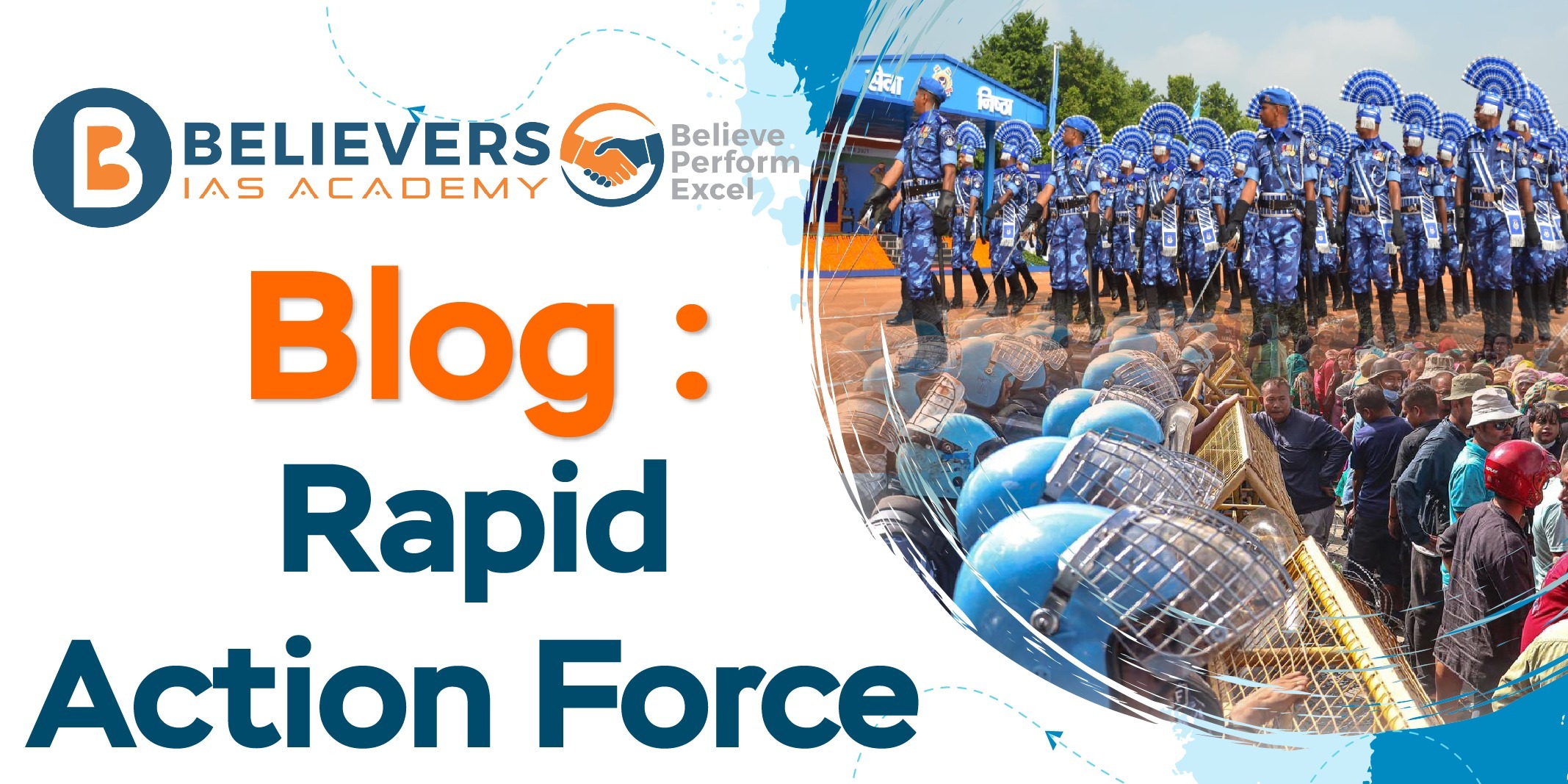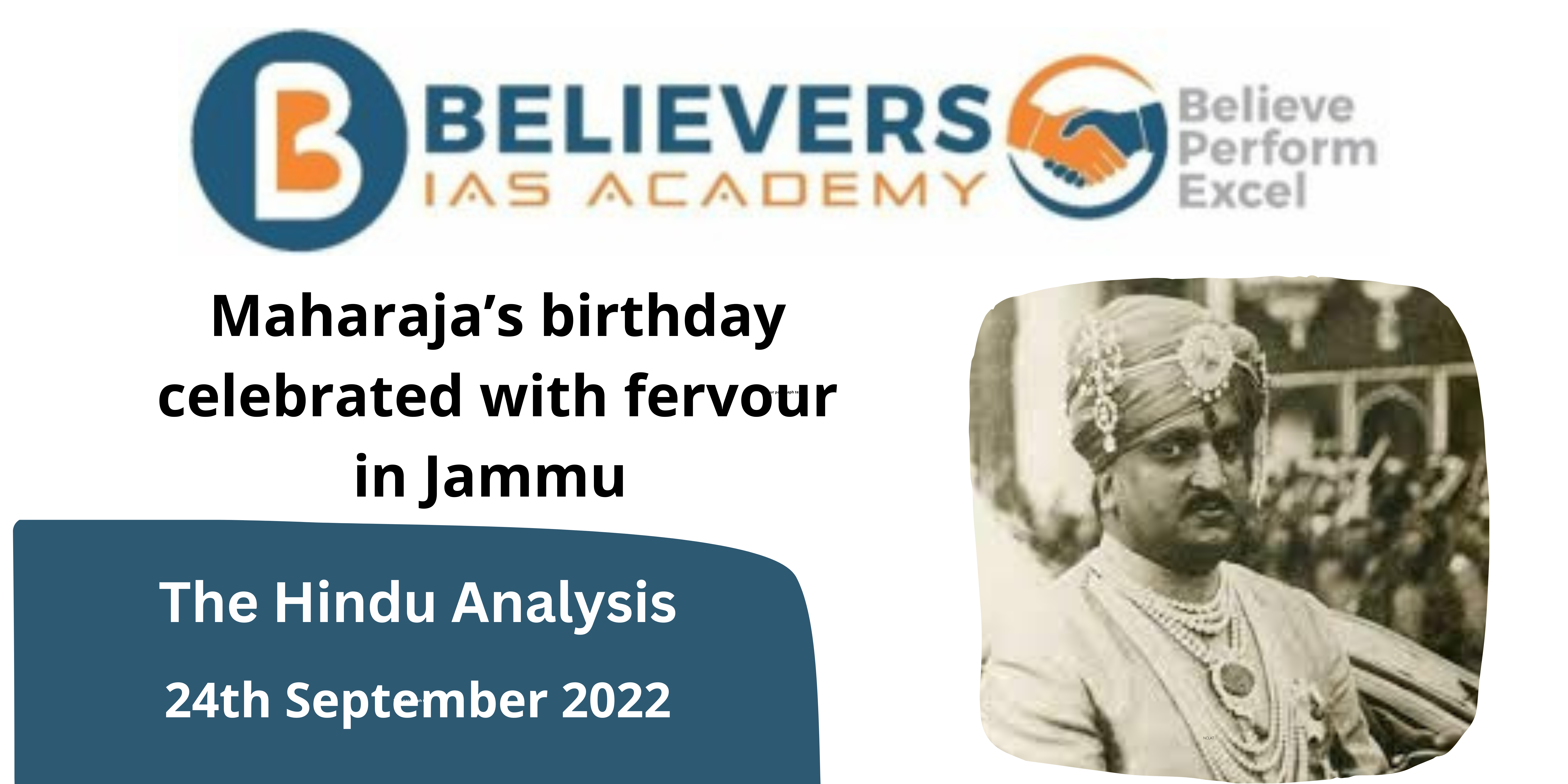Rapid Action Force (RAF)
The Central Reserve Police Force of India has a specialized division called the Rapid Action Force (RAF) that is under Central government authority and is used to handle riot and crowd control situations.
What is the historical background of the RAF?
- Pre-RAF Era (Pre-1990s): Before the RAF was established in the early 1990s, India used a variety of law enforcement organizations, such as the police and paramilitary forces, to handle riot situations and public disturbances. However, there was a growing understanding that to deal with such crises more successfully, a dedicated force with specialized training and tools was required.
- Rise in Communal and Civil Unrest: In different sections of India, communal tensions and civil unrest increased in the late 1980s and early 1990s. Riots, protests, and violent demonstrations were occurring more frequently, causing serious difficulties for law enforcement organizations. These incidents made it clear that a quick and qualified response force was required.
- Establishment of Raf (1991-1992): In response to the growing demand for a specialized force to handle riot and crowd control situations, the Indian government established the RAF in 1991–1992. On December 11, 1991, the RAF was formally established, with its main office in New Delhi. The system went into full operation on October 7, 1992. The force was specifically established to deal with riots, situations that could turn into riots, crowd control, rescue and relief efforts, and associated turmoil.
- Initial Expansion(Early 1990s): By October 1992, the government had initially established five battalions to bolster the RAF’s capability. As a result of the force’s importance, five more battalions were added in April 1994. This growth gave the RAF a stronger presence and improved its capacity to respond to emergencies across the nation.
- Recognition and Development: The RAF has gained recognition over the years for its contribution to upholding law and order in difficult circumstances. After serving for 11 years, the force received the President’s colours in October 2003, a significant achievement. With the approval of new training facilities and additional battalions, the RAF has continued to expand and change.
- Diverse Roles: Despite the RAF’s primary concentration on riot and crowd control, the force has participated in a variety of roles, including United Nations peacekeeping missions, relief operations in the wake of natural disasters, and counterterrorism operations. The variety of responsibilities reflects India’s changing security requirements.
Which Paramilitary organisation is the parent body of the RAF?
- The Rapid Action Force (RAF) is a specialized wing of the CRPF
- The largest paramilitary organization in India is the Central Reserve Police Force (CRPF). The Central Reserve Police Force was founded in 1939 as the Crown Representative Police and changed its name that in 1949. The CRPF is in charge of upholding internal security and protecting the country.
- The primary duties of the CRPF are to support state and union territory administrations in maintaining law and order and battling insurgency. To uphold law and order and put an end to militancy in Kashmir, the CRPF collaborates with the J&K police and the Indian Army.
- The Ministry of Home Affairs oversees the CRPF. It holds recruitment examinations, such as the yearly CRPF Constable GD Exam.
What is the organizational structure of the RAF?
- The Inspector-General of Police (IGP), who is the highest-ranking member of the police, is at the top of the hierarchy. The RAF is led generally and strategically by the IGP, who is stationed in New Delhi.
- Two regional divisions of the RAF are each led by a Deputy Inspector-General of Police (DIGP). The operations in the western and southern parts of India are managed by the Mumbai division, while the northern and central regions are serviced by the New Delhi division. To provide a coordinated response to emergencies, these DIGPs are in charge of the management and operations of the RAF units within their respective regions.
- The Central Reserve Police Force (CRPF) is home to the specialist battalions that make up the RAF’s main operational units. According to the information given, 15 such battalions exist. A Commanding Officer (CO) with the rank of Commandant is in charge of each unit. The CO is in charge of the battalion’s overall operations, operational readiness, and leadership.
- Companies, which act as intermediate-level formations for sending men to certain areas or incidents, are included within each battalion. The team, led by an Inspector, is the smallest independent functional unit in the RAF. These teams are designed with riot control, tear gas deployment, and fire control components, ensuring a thorough response to a variety of circumstances.
What is the role and responsibilities of the RAF?
- Riot and Crowd Control: The RAF’s primary and best-known function is to manage crowds and control riots during times of unrest. This covers dealing with demonstrations, protests, and aggressive mob behaviour. To disperse crowds and restore order while limiting harm to both the public and themselves, RAF officers are trained to employ non-lethal techniques and equipment.
- Maintaining Law and Order: RAF forces are frequently sent to areas experiencing racial tension, social unrest, or other types of civil disturbances to keep the peace. They are essential in preventing violence, safeguarding property, and guaranteeing public safety.
- Election and Festival Duties: The RAF is routinely requested to assist on important occasions like festivals and elections. Their presence aids in ensuring that these activities are carried out without incident and without any disturbances that would jeopardize the general populace’s safety or the electoral process.
- Handling Agitation: Members of the RAF are trained to deal with a variety of agitation, such as political demonstrations, strikes, and other types of civil disobedience. Their objective is to control these events without using excessive force and to protect the rights and security of everyone involved.
- United Nations Peacekeeping Operations: The CRPF contingents that fall under the RAF’s purview have been sent to these missions. Taking part in missions like the United Nations Mission in Liberia (UNMIL) falls under this category. By offering assistance in conflict and post-conflict areas, the RAF contributes to global peace and security.
- Humanitarian Actions: The RAF is not just a security force; it also takes part in humanitarian actions. During natural disasters like floods, earthquakes, cyclones, and epidemics, RAF troops are frequently requested to undertake quick rescue and relief operations. They strive to protect lives, aid impacted communities, and bring about a return to normalcy in disaster-stricken areas.
- Counterterrorism Operations: The RAF may occasionally assist counter terrorism initiatives in specific circumstances. For instance, RAF units contributed to the cordoning off of affected districts during the 2008 Mumbai Terror Attacks to control the situation and safeguard civilians.
Why is the government planning to withdraw the RAF from Manipur?
- Current Deployment: Ten RAF companies are currently stationed in Manipur, with eight of them located in the valley districts and two of them in the hills.
- Reports of a crisis: The situation the RAF is experiencing is highlighted in an internal assessment from the service dated July 6. An RAF unit was attacked by a mob of almost 3,000 people on July 4 in Thoubal, Manipur, when it attempted to stop the stealing of guns from a police armoury, according to the report.
- Inappropriate Deployment: Manipur, a territory with a history of insurgency and armed conflict, has seen the deployment of the RAF, which was originally developed for crowd control and upholding law and order during civil disturbances. Concerns have been expressed about this improper deployment in high-risk regions, notably those protected by the Armed Forces Special Powers Act (AFSPA).
- Risk to RAF Personnel: The RAF is largely trained for riot control and rapid response with minimum lethality, hence there is little risk to RAF personnel. RAF soldiers are exposed to an increased danger of firearms attacks due to their ongoing involvement in the anti-insurgency theatre in Manipur, for which they may not be well prepared.
- Disregard for Specialization: The RAF is an organization that specializes in handling riots, uprisings, and other types of communal crises. It goes against their assigned job and instruction to use them in counterinsurgency operations.
- Crowd Composition: According to the research, Manipur’s crowds frequently feature primarily women and civilians, which contrasts with the conditions for which the RAF is generally prepared. The security forces have a particular difficulty and risk as a result of this.



